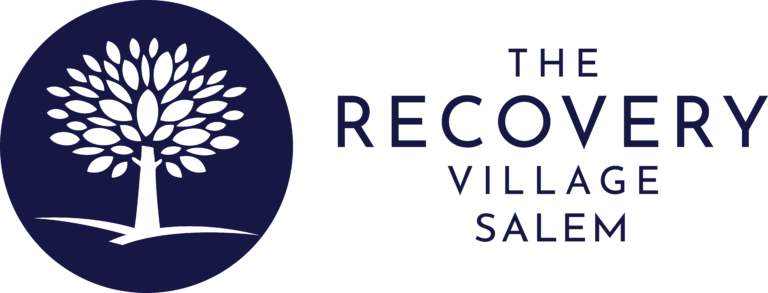Hydrocodone is a powerful semisynthetic opioid medication commonly prescribed for moderate to severe pain management. While effective for legitimate medical purposes, hydrocodone has a high potential for abuse and addiction due to its euphoric effects and rapid development of tolerance. Understanding the signs of hydrocodone addiction and available treatment options can help individuals and families navigate this challenging condition.
Hydrocodone is typically found in combination with other medications such as acetaminophen, aspirin, or ibuprofen. Many people recognize brand names like Vicodin, Norco, and Lortab, though these specific brands have been discontinued. Generic versions and newer formulations like Hysingla remain available and carry the same risks for dependence and addiction.
As a Schedule II controlled substance under the Controlled Substances Act, hydrocodone is recognized by the federal government as having high potential for abuse and severe psychological and physical dependence. Despite its medical benefits, the Drug Enforcement Administration closely monitors hydrocodone prescriptions due to widespread misuse and diversion.
How Hydrocodone Affects the Body and Brain
Hydrocodone works by binding to opioid receptors in the brain and spinal cord, particularly the mu-opioid receptors. This interaction blocks pain signals from reaching the brain while also triggering the release of dopamine in the brain’s reward system. The combination of pain relief and euphoric feelings creates the potential for psychological dependence.
Ready to Break Free From Addiction?
If you’re seeking help for yourself or a loved one, our expert team is here to guide you every step of the way. Don’t wait—start your journey to recovery today.
With repeated use, the brain adapts to hydrocodone’s presence by reducing natural endorphin production and altering neurotransmitter balance. This adaptation process, known as tolerance, means that higher doses are needed to achieve the same effects. As tolerance develops, physical dependence often follows, creating withdrawal symptoms when the medication is stopped.
The transition from prescribed use to addiction can happen gradually and may not be immediately apparent. Many people who become addicted to hydrocodone initially took the medication exactly as prescribed for legitimate pain management. However, factors such as genetic predisposition, mental health conditions, and environmental influences can increase the risk of developing an addiction.
Signs and Symptoms of Hydrocodone Addiction
Recognizing hydrocodone addiction requires understanding both physical and behavioral changes that occur with problematic use. These signs often develop gradually and may be subtle at first, making early detection challenging.
Physical Signs
Physical symptoms of hydrocodone addiction include constricted pupils that don’t respond normally to light changes, drowsiness or sedation during inappropriate times, slowed breathing and heart rate, constipation and digestive problems, and decreased coordination and balance. Long-term use may also cause noticeable weight loss, poor hygiene, and frequent illnesses due to suppressed immune function.
Sleep patterns often become disrupted, with periods of excessive sleeping followed by insomnia. Individuals may appear confused or disoriented, especially when the medication is wearing off. Changes in appetite and eating habits are common, with many people losing interest in food.
Behavioral Changes
Behavioral signs of hydrocodone addiction include obsessive thoughts about the medication, seeking multiple prescriptions from different doctors (doctor shopping), stealing pills from family members or friends, and lying about pain levels to obtain more medication. Social isolation often occurs as the person prioritizes drug use over relationships and responsibilities.
Work or school performance typically declines as the addiction progresses. Individuals may miss important appointments, deadlines, or commitments due to drug use or withdrawal symptoms. Financial problems may develop as people spend increasing amounts of money on obtaining hydrocodone illegally when prescriptions are no longer sufficient.
Psychological Symptoms
The psychological impact of hydrocodone addiction includes mood swings ranging from euphoria when using to depression and anxiety when withdrawing. Irritability and anger may occur, especially when access to the medication is threatened. Many people experience increased sensitivity to stress and difficulty coping with everyday challenges without the medication.
Cognitive effects include impaired judgment, difficulty concentrating, and problems with memory. Decision-making becomes focused primarily on obtaining and using hydrocodone, often at the expense of other important priorities. Depression and anxiety disorders commonly co-occur with hydrocodone addiction and require integrated treatment approaches.
Understanding Hydrocodone Withdrawal
Withdrawal from hydrocodone occurs when regular use is stopped or significantly reduced. The severity and duration of withdrawal symptoms depend on factors such as the amount used, duration of use, individual metabolism, and overall health status.
Acute Withdrawal Symptoms
Acute withdrawal symptoms typically begin within 6-12 hours after the last dose and can include muscle aches and bone pain, nausea and vomiting, diarrhea, runny nose and watery eyes, goosebumps and chills, dilated pupils, increased heart rate and blood pressure, and severe anxiety and agitation.
Sleep disturbances are common during withdrawal, with insomnia, restless leg syndrome, and abnormal dreams affecting most people. Intense cravings for hydrocodone often accompany physical symptoms, making it extremely difficult to maintain abstinence without professional support.
The peak intensity of withdrawal symptoms usually occurs within 24-72 hours after the last dose. During this time, symptoms can be severe enough to interfere with daily functioning and may prompt return to drug use simply to feel normal again.
Protracted Withdrawal
Some individuals experience protracted withdrawal symptoms that can last for weeks or months after the acute phase. These symptoms may include persistent depression and anxiety, difficulty experiencing pleasure (anhedonia), sleep disturbances, and ongoing cravings for hydrocodone.
Protracted withdrawal represents one of the most challenging aspects of hydrocodone recovery because symptoms can be subtle but persistent. Many people underestimate the duration of this phase and may relapse during this vulnerable period. Understanding that these symptoms are temporary and part of the healing process is crucial for maintaining motivation during recovery.
The Dangers of Hydrocodone Overdose
Hydrocodone overdose represents a serious medical emergency that can result in permanent injury or death. Overdose risk increases significantly when tolerance develops, when the medication is combined with alcohol or other depressants, or when people return to using after a period of abstinence.
Overdose Symptoms
Signs of hydrocodone overdose include severely slowed or stopped breathing, blue lips and fingernails, cold and clammy skin, weak pulse or slow heartbeat, loss of consciousness, and muscle weakness or limpness. In severe cases, the person may enter a coma or experience cardiac arrest.
Respiratory depression is the most dangerous aspect of hydrocodone overdose because insufficient oxygen can cause brain damage within minutes. Even if the person survives, prolonged oxygen deprivation can result in permanent cognitive impairment or other neurological problems.
Emergency Response
If overdose is suspected, call 911 immediately and provide as much information as possible about the situation. If available, naloxone (Narcan) can temporarily reverse opioid overdose symptoms, but professional medical attention is still necessary because naloxone’s effects are temporary and withdrawal symptoms may occur.
While waiting for emergency services, try to keep the person awake and breathing. If they are unconscious, place them in the recovery position to prevent choking if they vomit. Be prepared to perform rescue breathing or CPR if necessary.
Treatment Options for Hydrocodone Addiction
Effective treatment for hydrocodone addiction typically involves multiple phases and approaches tailored to individual needs. The process usually begins with medical detox followed by comprehensive therapy and long-term recovery support.
Medical Detox
Medical detox provides safe, supervised withdrawal from hydrocodone under professional medical care. This process typically takes 5-7 days but can vary depending on individual factors. Medical supervision helps manage withdrawal symptoms and prevent complications.
Medications may be used during detox to ease withdrawal symptoms and reduce cravings. Methadone, buprenorphine, and lofexidine are FDA-approved options that can help manage opioid withdrawal symptoms by working on the same brain receptors as hydrocodone but with less potential for abuse.
The medical detox program in Salem provides 24-hour medical supervision, ensuring safety and comfort during the withdrawal process. Medical staff can adjust medications and interventions based on individual response and needs.
Residential Treatment
Following detox, many people benefit from residential treatment programs that provide intensive, round-the-clock care in a structured environment. These programs typically last 30-90 days and include individual therapy, group counseling, family therapy, and educational sessions about addiction and recovery.
Residential treatment removes individuals from environments that may trigger drug use and provides intensive focus on developing recovery skills. The inpatient treatment program offers comprehensive care that addresses both the physical and psychological aspects of addiction.
During residential treatment, individuals learn coping strategies for managing cravings, identifying triggers, and developing healthy lifestyle habits. Family therapy helps repair relationships and build support systems that are crucial for long-term recovery success.
Outpatient Treatment Programs
Outpatient treatment allows individuals to receive professional care while maintaining work, school, and family responsibilities. These programs vary in intensity from partial hospitalization programs that meet most days of the week to standard outpatient counseling that meets weekly.
Intensive outpatient programs typically meet 3-5 days per week for several hours each day and include individual therapy, group counseling, and educational sessions. These programs provide structured support while allowing individuals to gradually transition back to independent living.
The outpatient treatment programs offer flexibility for people who cannot commit to residential treatment but still need intensive support for recovery. These programs can also serve as step-down care following residential treatment.
Medication-Assisted Treatment
Medication-assisted treatment (MAT) combines FDA-approved medications with counseling and behavioral therapies to treat opioid addiction. This approach has been shown to improve treatment outcomes and reduce the risk of overdose and death.
Methadone maintenance treatment provides a long-acting opioid that prevents withdrawal symptoms and cravings without producing euphoria. This treatment requires daily visits to specialized clinics and has been shown to be effective for many people with severe opioid addiction.
Buprenorphine can be prescribed by qualified physicians in office settings and offers more flexibility than methadone. It has a ceiling effect that reduces overdose risk and can be gradually tapered when the person is ready to discontinue medication.
Naltrexone blocks opioid receptors and prevents euphoric effects if relapse occurs. It’s available as a monthly injection and can be helpful for people who have completed detox and are motivated to maintain abstinence.
Therapy and Counseling Approaches
Effective treatment for hydrocodone addiction includes various therapeutic approaches that address the psychological and behavioral aspects of addiction.
Cognitive-Behavioral Therapy
Cognitive-behavioral therapy (CBT) helps individuals identify and change thought patterns and behaviors that contribute to drug use. This approach teaches practical skills for managing cravings, avoiding triggers, and developing healthy coping strategies.
CBT sessions focus on developing problem-solving skills, improving emotional regulation, and building motivation for recovery. Individuals learn to recognize early warning signs of relapse and develop specific action plans for high-risk situations.
Contingency Management
Contingency management uses positive reinforcement to encourage healthy behaviors and treatment participation. This approach may include rewards for clean drug tests, attending therapy sessions, or achieving recovery milestones.
Research shows that contingency management can be particularly effective for opioid addiction when combined with other treatment approaches. The immediate positive reinforcement helps counteract the brain changes caused by addiction.
Family Therapy
Family therapy addresses how addiction affects relationships and helps family members learn how to support recovery effectively. This approach can help repair damaged relationships and improve communication patterns.
Family members often need education about addiction as a disease and guidance on how to set healthy boundaries. Learning to avoid enabling behaviors while still providing support is crucial for both the individual in recovery and their loved ones.
Co-Occurring Mental Health Conditions
Many people with hydrocodone addiction also struggle with mental health conditions such as depression, anxiety, trauma, or chronic pain. Addressing these co-occurring conditions is essential for successful recovery.
Integrated Treatment
Integrated treatment addresses addiction and mental health conditions simultaneously rather than treating them as separate problems. This approach recognizes that these conditions often influence each other and require coordinated care.
The comprehensive treatment programs include psychiatric evaluation and medication management when appropriate. Mental health medications may be necessary to address underlying conditions that contributed to addiction development.
Chronic Pain Management
Many people develop hydrocodone addiction while managing legitimate chronic pain conditions. Recovery must include alternative pain management strategies that don’t rely on potentially addictive medications.
Alternative pain management approaches may include physical therapy, non-opioid medications, psychological techniques for pain management, and complementary therapies such as acupuncture or massage. Working with pain management specialists who understand addiction is crucial for developing effective treatment plans.
Insurance Coverage and Treatment Access
Understanding insurance coverage for addiction treatment can help make professional care more accessible. Most insurance plans are required to cover substance abuse treatment under federal parity laws.
Verifying Benefits
The insurance verification team can help determine what services are covered under your specific plan. Coverage typically includes medical detox, residential treatment, outpatient counseling, and medication-assisted treatment.
Understanding your benefits before beginning treatment can help you make informed decisions about care options and financial planning. Many people are surprised to learn that their insurance covers more addiction treatment services than they expected.
Treatment Financing
For those without insurance or with limited coverage, various financing options may be available. Some treatment centers offer sliding scale fees based on income, payment plans, or scholarships for those in financial need.
The investment in professional treatment is often offset by the costs saved from avoiding continued addiction, including legal problems, job loss, health complications, and relationship damage. Early intervention typically costs less than addressing the long-term consequences of untreated addiction.
Recovery and Long-Term Success
Recovery from hydrocodone addiction is a lifelong process that requires ongoing attention and support. However, with proper treatment and commitment, long-term sobriety is achievable.
Relapse Prevention
Relapse prevention strategies include identifying personal triggers, developing coping skills, building strong support networks, and maintaining ongoing involvement in treatment or support groups. Understanding that relapse doesn’t mean failure can help maintain motivation during challenging times.
Many people benefit from ongoing participation in support groups such as Narcotics Anonymous or SMART Recovery. These groups provide peer support, accountability, and practical strategies for maintaining sobriety.
Lifestyle Changes
Successful recovery often involves significant lifestyle changes including developing healthy routines, improving physical health through exercise and nutrition, building meaningful relationships, and finding purpose through work, volunteer activities, or hobbies.
Stress management skills become particularly important because stress is a common trigger for relapse. Learning healthy ways to cope with life’s challenges without relying on substances is essential for long-term success.
Getting Help for Hydrocodone Addiction
If you or someone you love is struggling with hydrocodone addiction, professional help is available. The first step is often the most difficult, but it leads to improved health, restored relationships, and a life free from the constraints of addiction.
The Recovery Village Salem offers comprehensive Salem drug and alcohol treatment that includes specialized programs for opioid addiction. Our experienced medical team understands the unique challenges of hydrocodone dependence and can provide personalized care throughout the recovery process.
Treatment options include medically supervised detox, residential treatment programs, outpatient counseling and therapy, medication-assisted treatment, family support services, and comprehensive aftercare planning. Our compassionate team is available 24/7 to provide information, support, and guidance for beginning the recovery process.
Don’t let hydrocodone addiction continue to control your life or the life of someone you love. Recovery is possible with the right support and treatment approach. Contact our admissions team today to learn more about treatment options and begin your journey toward lasting recovery.


